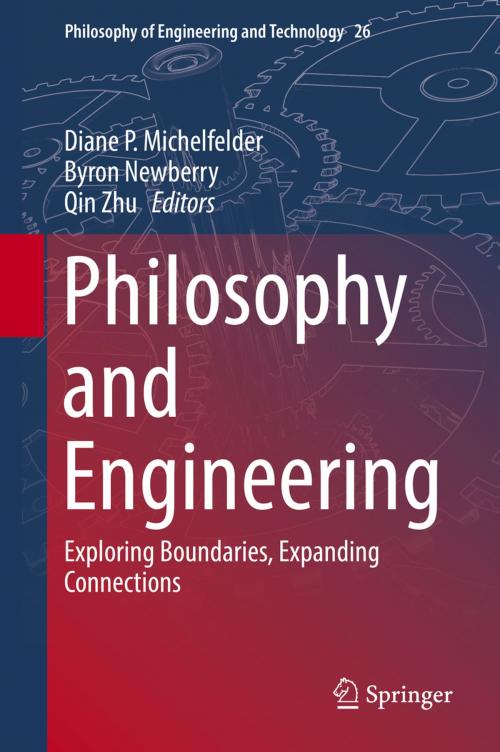Philosophy and Engineering
Exploring Boundaries, Expanding Connections
Nonfiction, Science & Nature, Science, Other Sciences, Study & Teaching, Religion & Spirituality, Philosophy, Reference| Author: | ISBN: | 9783319451930 | |
| Publisher: | Springer International Publishing | Publication: | November 26, 2016 |
| Imprint: | Springer | Language: | English |
| Author: | |
| ISBN: | 9783319451930 |
| Publisher: | Springer International Publishing |
| Publication: | November 26, 2016 |
| Imprint: | Springer |
| Language: | English |
This volume, the result of an ongoing bridge building effort among engineers and humanists, addresses a variety of philosophical, ethical, and policy issues emanating from engineering and technology. Interwoven through its chapters are two themes, often held in tension with one another: “Exploring Boundaries” and “Expanding Connections.” “Expanding Connections” highlights contributions that look to philosophy for insight into some of the challenges engineers face in working with policy makers, lay designers, and other members of the public. It also speaks to reflections included in this volume on the connections between fact and value, reason and emotion, engineering practice and the social good, and, of course, between engineering and philosophy. “Exploring Boundaries” highlights contributions that focus on some type of demarcation. Public policy sets a boundary between what is regulated from what is not, academic disciplines delimit themselves by their subjects and methods of inquiry, and professions approach problems with unique goals and by using concepts and language in particular ways that create potential obstacles to collaboration with other fields. These and other forms of boundary setting are also addressed in this volume.
Contributors explore these two themes in a variety of specific contexts, including engineering epistemology, engineers’ social responsibilities, engineering and public policy-making, engineering innovation, and the affective dimensions of engineering work. The book also includes analyses of social and ethical issues with emerging technologies such as 3-D printing and its use in medical applications, as well as social robots. Initial versions of the invited papers included in this book were first presented at the 2014 meeting of the Forum on Philosophy, Engineering, and Technology (fPET), held at Virginia Tech in Blacksburg, Virginia, USA. The volume furthers fPET’s intent of extending and developing the philosophy of engineering as an academic field, and encouraging conversation, promoting a sense of shared enterprise, and building community among philosophers and engineers across a diversity of cultural backgrounds and approaches to inquiry.
This volume, the result of an ongoing bridge building effort among engineers and humanists, addresses a variety of philosophical, ethical, and policy issues emanating from engineering and technology. Interwoven through its chapters are two themes, often held in tension with one another: “Exploring Boundaries” and “Expanding Connections.” “Expanding Connections” highlights contributions that look to philosophy for insight into some of the challenges engineers face in working with policy makers, lay designers, and other members of the public. It also speaks to reflections included in this volume on the connections between fact and value, reason and emotion, engineering practice and the social good, and, of course, between engineering and philosophy. “Exploring Boundaries” highlights contributions that focus on some type of demarcation. Public policy sets a boundary between what is regulated from what is not, academic disciplines delimit themselves by their subjects and methods of inquiry, and professions approach problems with unique goals and by using concepts and language in particular ways that create potential obstacles to collaboration with other fields. These and other forms of boundary setting are also addressed in this volume.
Contributors explore these two themes in a variety of specific contexts, including engineering epistemology, engineers’ social responsibilities, engineering and public policy-making, engineering innovation, and the affective dimensions of engineering work. The book also includes analyses of social and ethical issues with emerging technologies such as 3-D printing and its use in medical applications, as well as social robots. Initial versions of the invited papers included in this book were first presented at the 2014 meeting of the Forum on Philosophy, Engineering, and Technology (fPET), held at Virginia Tech in Blacksburg, Virginia, USA. The volume furthers fPET’s intent of extending and developing the philosophy of engineering as an academic field, and encouraging conversation, promoting a sense of shared enterprise, and building community among philosophers and engineers across a diversity of cultural backgrounds and approaches to inquiry.















